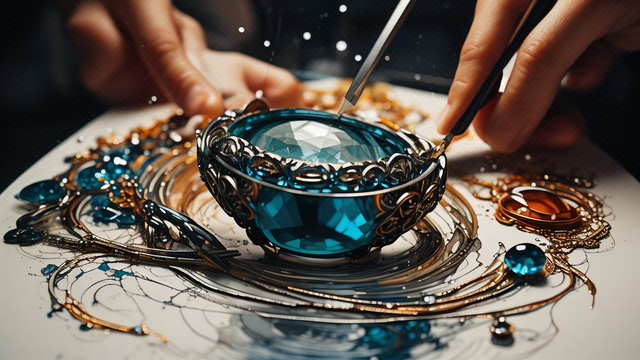
The Art of Jewelry Design: Crafting Timeless Elegance
Jewelry design is a captivating blend of art, creativity, and craftsmanship. From intricate necklaces to stunning rings, the world of jewelry offers endless possibilities for self-expression and personal style. This article explores the fundamentals of jewelry design, essential techniques, and tips for aspiring designers looking to make a mark in this glamorous field.
Understanding Jewelry Design
Jewelry design involves conceptualizing, creating, and crafting wearable art that can enhance one’s appearance and tell a story. Designers draw inspiration from various sources, including nature, architecture, culture, and personal experiences. The goal is to create unique pieces that resonate with individuals and reflect their identity.
Key Elements of Jewelry Design
- Materials: Jewelry can be made from a variety of materials, including precious metals like gold, silver, and platinum, as well as gemstones, beads, and sustainable materials. Choosing the right materials is crucial for both aesthetics and durability.
- Style: Different styles of jewelry appeal to different audiences. Common styles include classic, contemporary, vintage, bohemian, and minimalist. Understanding your target market will help you design pieces that resonate with consumers.
- Techniques: Jewelry design incorporates various techniques such as metalworking, stone setting, casting, enameling, and engraving. Mastering these techniques allows designers to bring their creative visions to life.
- Proportions and Balance: A successful piece of jewelry must be well-proportioned, ensuring that elements such as size, weight, and symmetry work harmoniously together. Designers often create sketches and prototypes to visualize their ideas before crafting the final product.
Tips for Aspiring Jewelry Designers
- Develop a Unique Style: Finding your distinct aesthetic is essential. Experiment with different techniques, materials, and designs to discover what resonates with you. A unique style can set you apart in a competitive market.
- Create a Portfolio: Showcase your best work in a portfolio that reflects your skills and creativity. Include sketches, photographs of finished pieces, and descriptions of your design processes. A well-curated portfolio is vital for attracting clients and job opportunities.
- Understand the Market: Keep abreast of industry trends, consumer preferences, and emerging styles. Attend trade shows, follow jewelry blogs, and engage with other designers on social media to stay informed.
- Learn the Business Side: Successful jewelry designers must also understand the business aspects of their craft. This includes pricing strategies, marketing, branding, and managing finances. Consider taking courses or seeking mentorship to gain business insights.
- Network: Building relationships within the jewelry industry can lead to valuable opportunities. Attend industry events, join jewelry organizations, and connect with fellow designers, suppliers, and retailers.
Conclusion
Jewelry design is a rewarding field that allows for artistic expression while creating beautiful accessories that people cherish. Whether you’re a seasoned designer or just starting, embracing creativity and honing your skills can lead to a fulfilling career. Keep exploring, designing, and innovating; the world of jewelry awaits your unique touch.
AD
article by 52ctf is licensed under CC BY-NC-ND 4.0